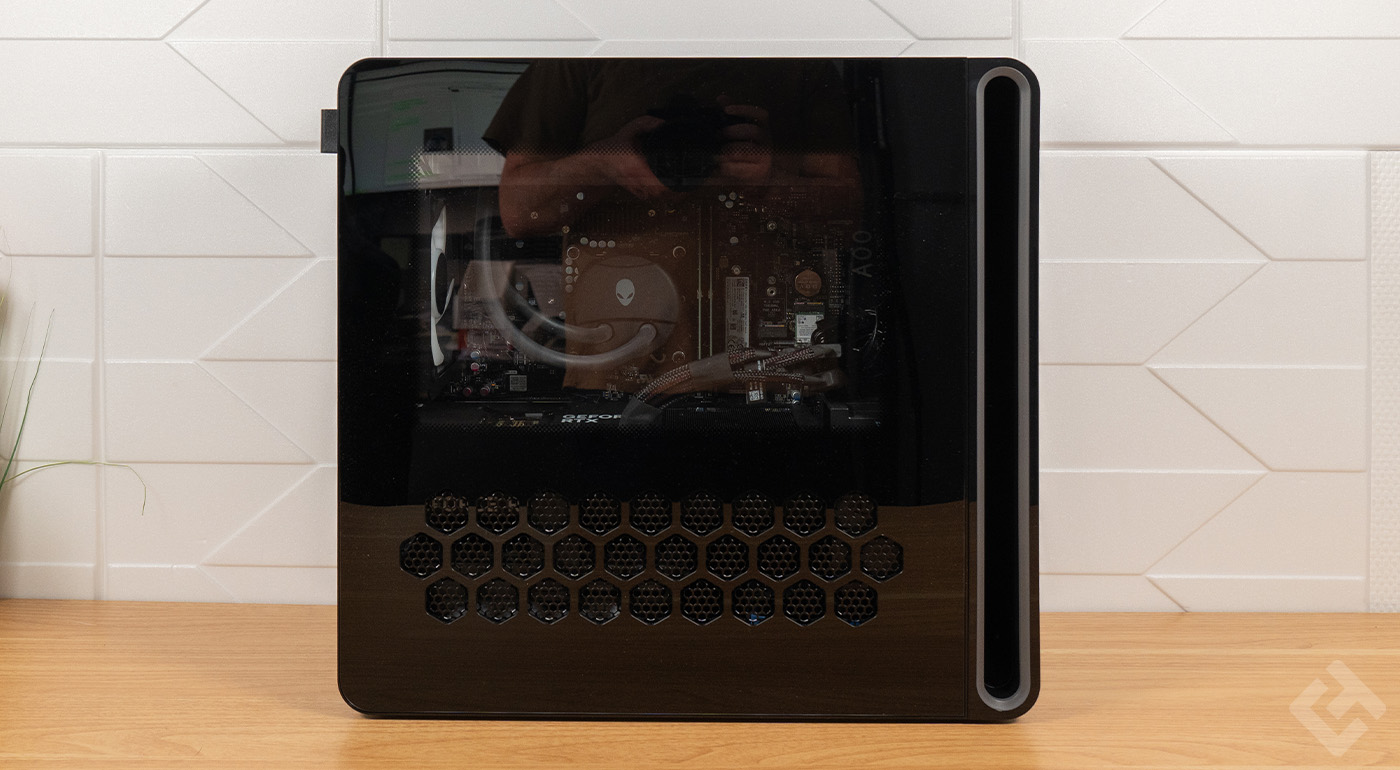The Alienware Aurora R16 is Dell’s new fixed gamer PC, with a new look this year, the PC almost completely changes its design. Signs of the previous Aurora range can be seen, notably the long, elongated O-shaped RGB stripe, which now runs along the side. However, the Alienware Aurora R16 is still the victim of a terrible aesthetic error on Dell’s part.
Alienware Aurora R16 design
The Alienware Aurora R16 is frankly pretty, taking on a slightly wiser shape than previous versions, which isn’t a bad thing. It now looks a little more like a desktop PC than a UFO that came out of nowhere. However, the PC is still subject to any aesthetic errors the manufacturer may make, starting with the front panel.
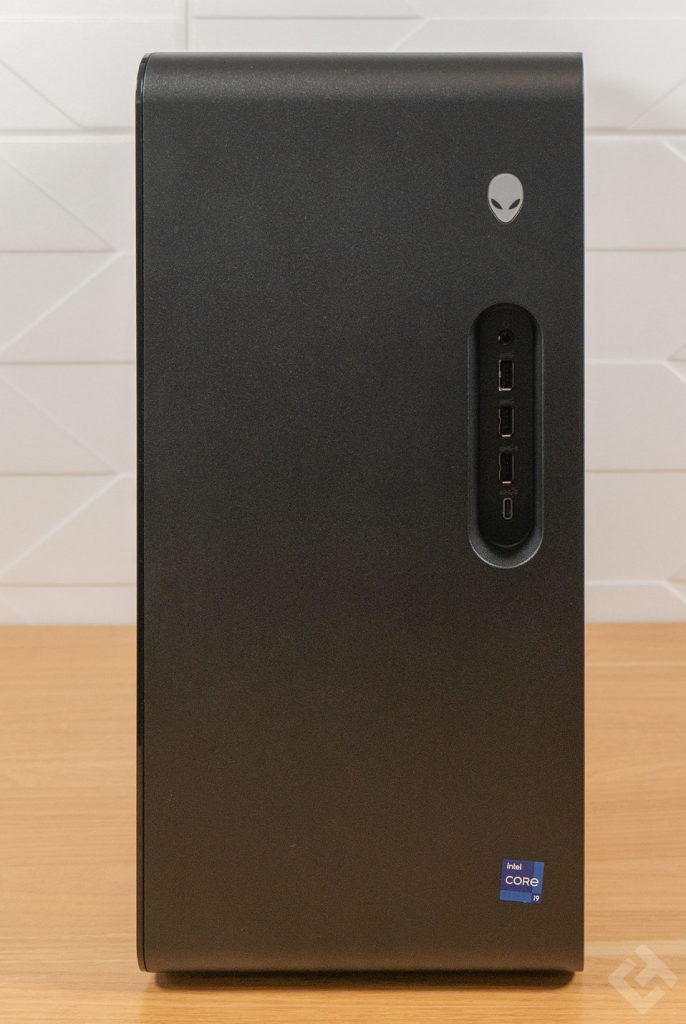
On the front is the Dell logo, as well as the front panel with all the machine’s connectors. All’s well and good, until you see the front panel. Frankly, a big indentation in the front panel like that is a shame… The necessary connectivity is there, of course, but having it all at the top or bottom, or on one side at the most, wouldn’t have been any worse.
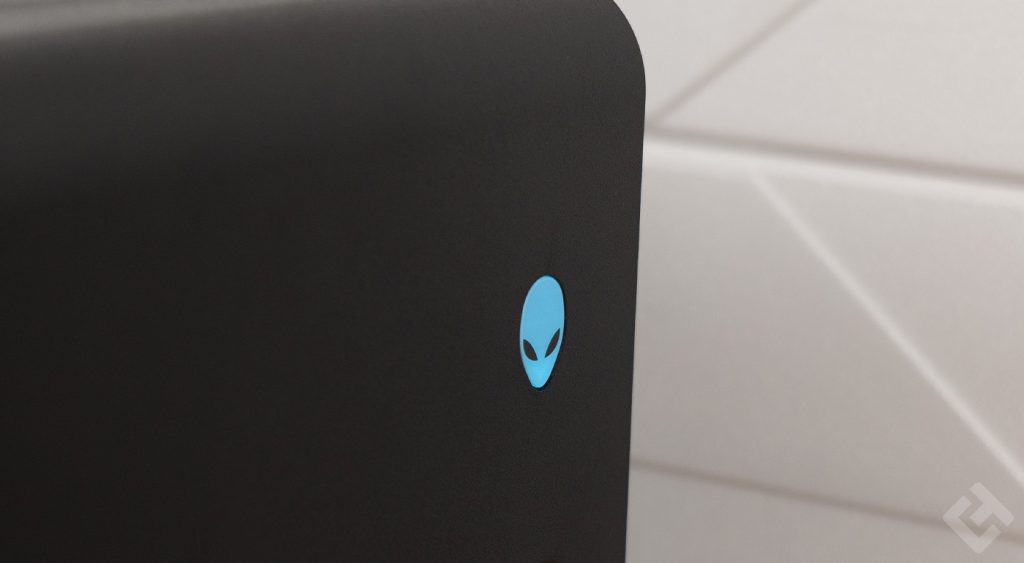
This is also where you’ll find the start button. This is, of course, backlit, with visual effects that can be set using Dell’s Alienware Command Center software. On the front, then, it’s okay, but nothing more. On the right, there’s only an embossed “AURORA” logo in the machine’s side panel, and on the left there’s a glass panel that lets you see into the PC.
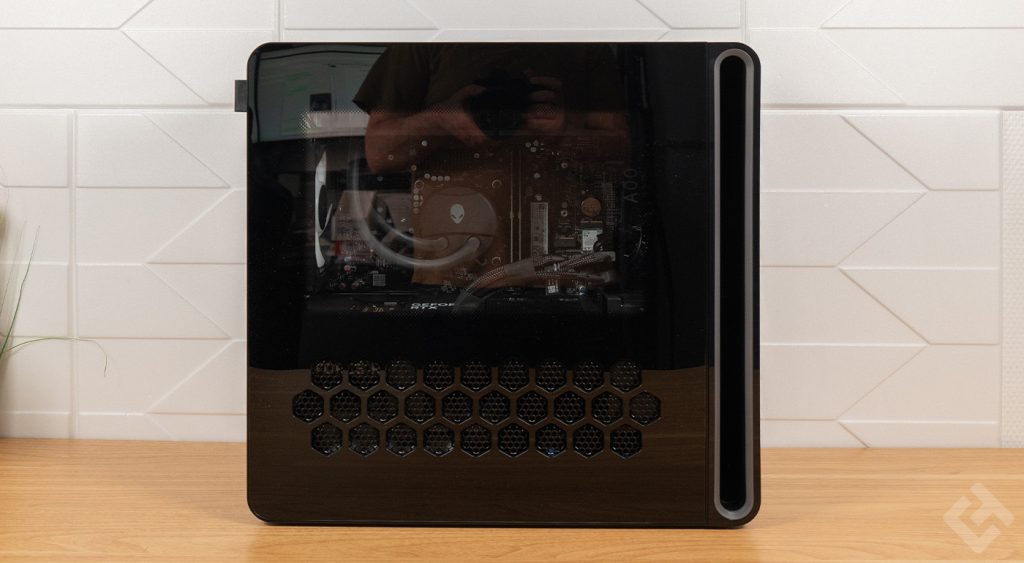
I have to admit that the green PCB makes me vibrate, it’s so magnificent, so beautiful, so … No, it’s disgusting, who’s still doing that in 2024? Obviously, one of the biggest PC manufacturers, but it’s shameful to still be offering machines with a visible green PCB. At worst, a simple green PCB doesn’t matter if you can’t see it! But when you’ve got a window with a bird’s-eye view, you’ve got to make an effort with a black, white or other pleasantly colored PCB! The look is decidedly different from that of the Aurora R13 and its predecessors.
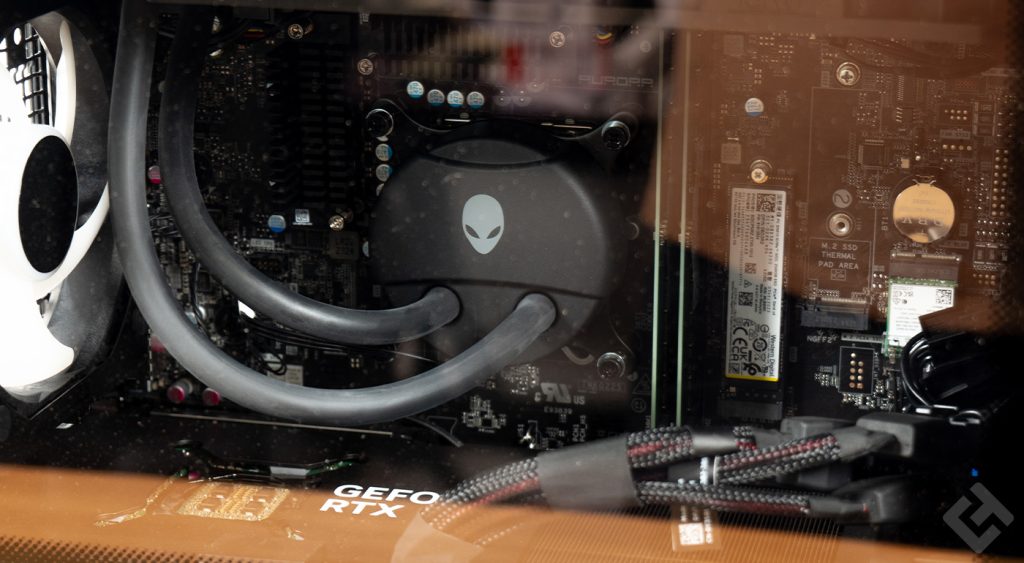
There is, however, an M.2 connector available to accommodate a second M.2 NVMe SSD. We can also see the presence of two green RAM bars, the height of elegance here, and just 2 RAM slots, hyper-practical for a machine that can be upgraded over time…
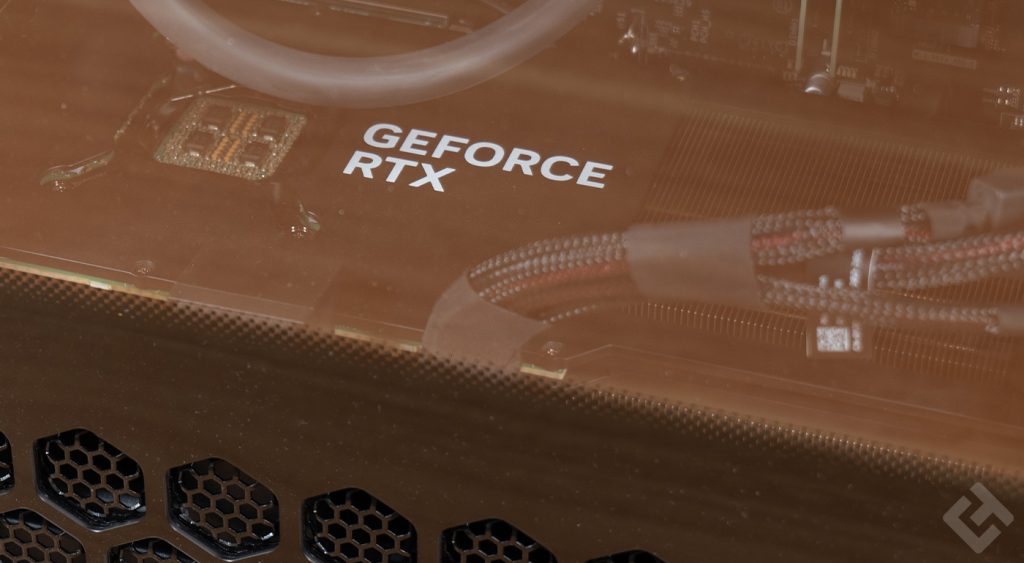
However, the watercooling seems effective, and the graphics card is somewhat jammed, but it’s still an RTX 4090, whose cables are clearly more visible than the card itself, the latter being hidden by a metal mesh on the glass, we don’t know why. So, full view of the cables inside the machine, a real pleasure once again…
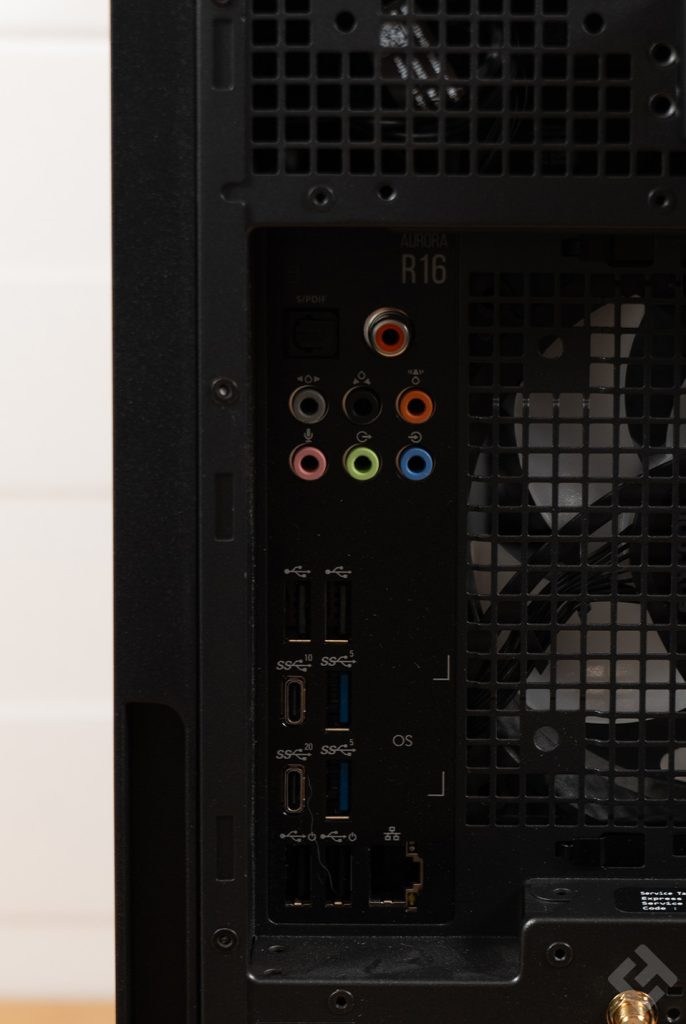
At the rear, you’ll find all the connectors, from the motherboard to the Wi-Fi card, which seems to be connected separately, and also the graphics card. We’ll look at this in a few lines, in the relevant paragraph.
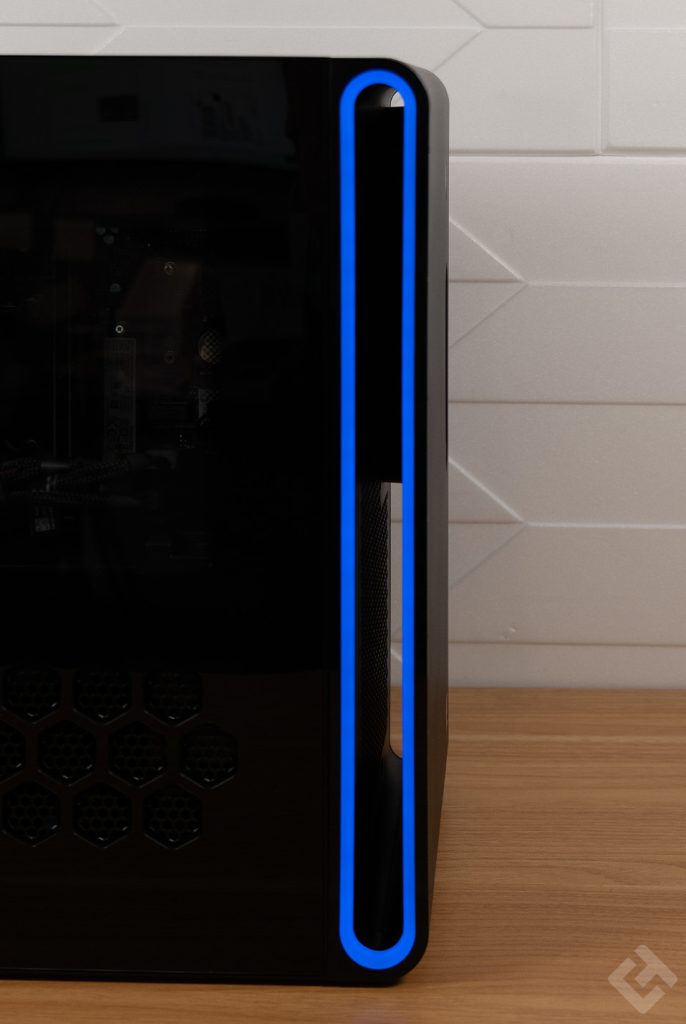
But the Alienware Aurora R16 isn’t so badly designed, its look adopting a slightly more conventional shape than the previous PCs in the range, which is more practical to house on a desk, and which fits a little better everywhere.
On the other hand, I don’t understand why Dell is supplying a totally unconventional Wi-Fi antenna, potentially to be fixed to a wall or desk … And above all, why provide an ultra-entry-level keyboard and mouse with a gaming PC, with the look of office equipment?! Honestly, at this point, it would be better not to supply anything at all, as it would be less likely to come across as a lack of knowledge of the manufacturer’s own product.
Alienware Aurora R16 specifications
| Model | Alienware Aurora R13 |
| PC type | Gamer – Fixed |
| Processor | Intel Core i9 14900KF |
| RAM | 64 GB DDR5 5200 MHz |
| Storage | 2 TB SSD NVMe |
| GPU | Dell GeForce RTX 4090 |
| Wi-Fi | Wi-Fi 6 (ax) |
| Bluetooth | Bluetooth 5 |
Performance and benchmarks
In terms of performance, this PC is equipped with the best components available today. There’s a very powerful Intel Core i9 14900KF processor, without integrated graphics to reduce the price a little, but with the necessary power under the hood – I’ve already tested the classic Core i9 14900K. With this, a total of 64 GB of RAM, in DDR5 of course, but that’s not all.
There’s a PCIe 4 M.2 SSD offering 2TB of storage, but this is the only one, of course, although it is possible to add a second SSD, right next to it. Naturally, there’s no heatsink on the motherboard, nothing to screw on, just install the SSD.
As for the graphics card, this is the most powerful model on the market, the Nvidia GeForce RTX 4090. A very nice configuration for performance worthy of the name, and above all, irreproachable gaming quality.
On the processor side, it’s decent but not extraordinary, the fault of a cooling system that’s certainly light and insufficient for the power that the CPU can develop. In fact, GeekBench scores 4000 points lower than the benchmark CPU test.
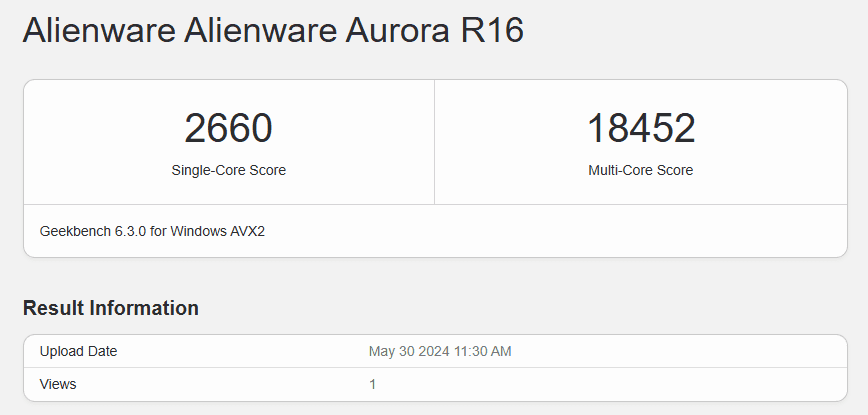
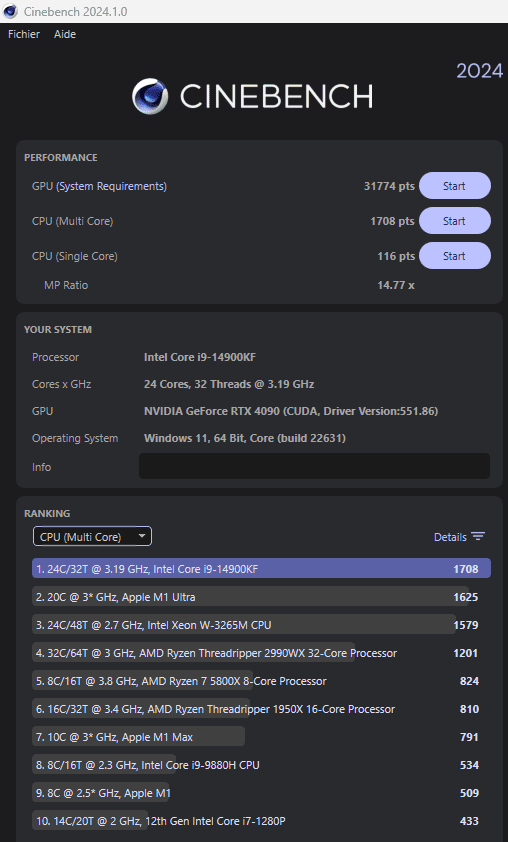
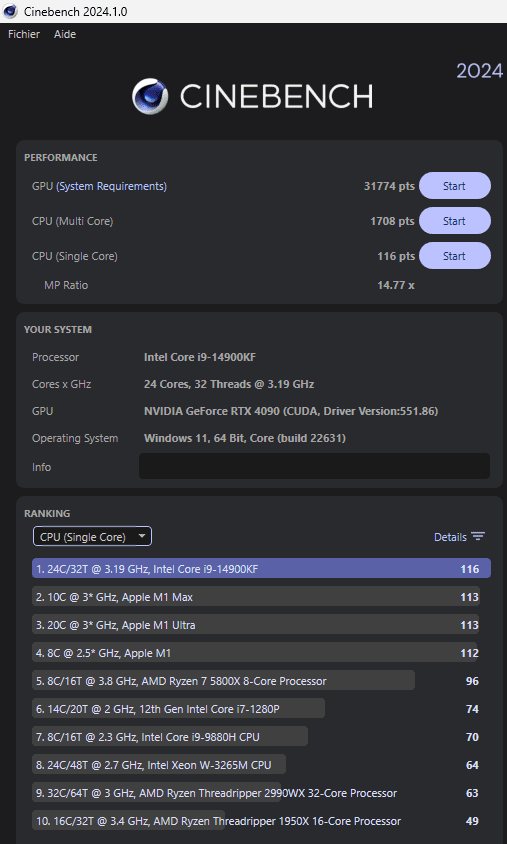
On CineBench, it’s not bad – it does better than all the other processors compared, of course – but once again, I’d have expected something better cooled.
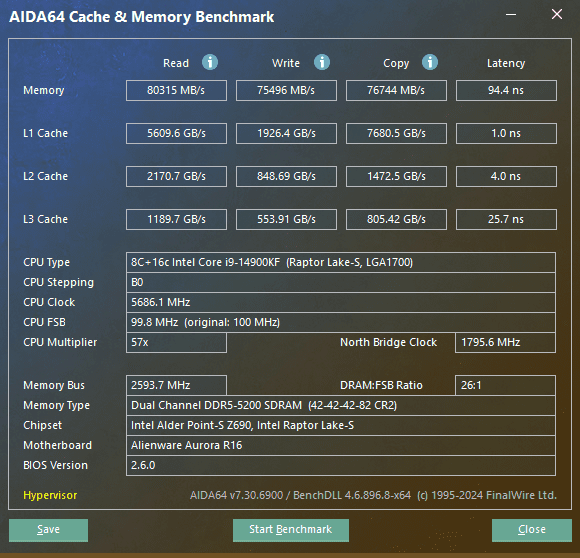
As for the RAM, it’s a great pity that it’s only clocked at 5200 MHz. For DDR5, we could have expected something a little better, like RAM at 6000 MHz, that would have been more daring. Remember that this is a desktop PC, not a laptop. What’s more, there are some very good 6000 MHz RAM kits available.
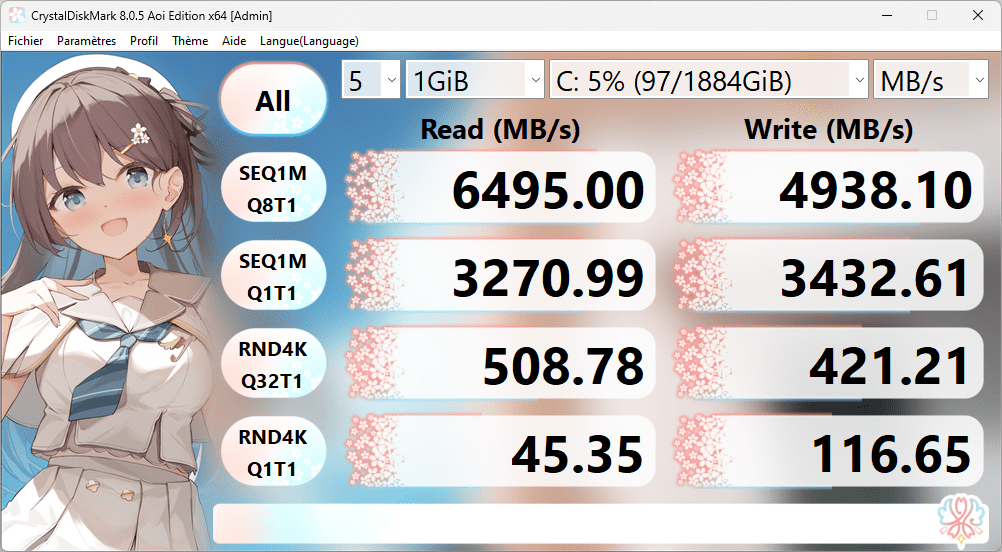
As for the SSD, it’s not a PCIe 5 model, but an “old” PCIe 4 model, which is still very suitable for gaming. Reading speeds of around 6500 MB/s are decent, so we’re not going to complain. More throughput would certainly be interesting, but more for the sake of numbers than a real gain in performance.
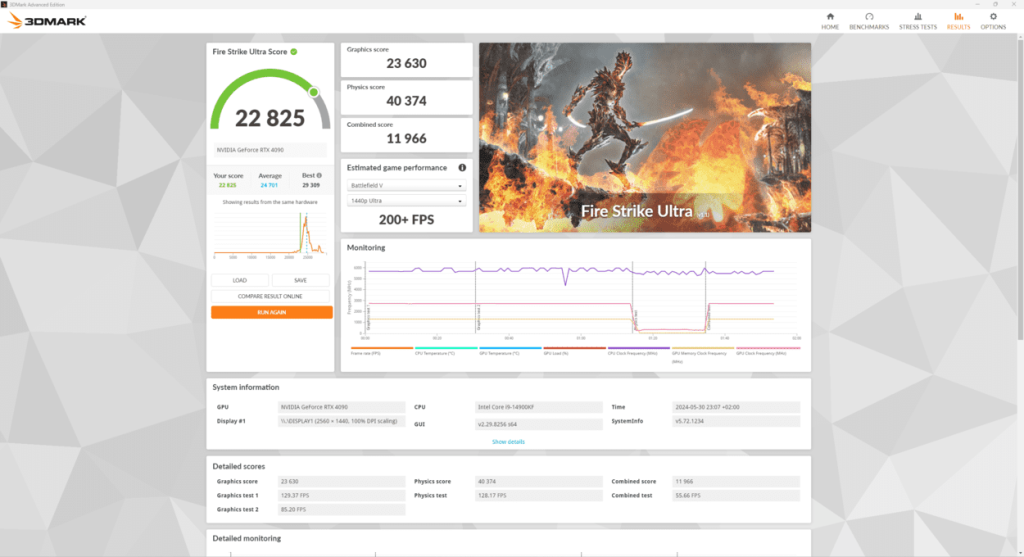
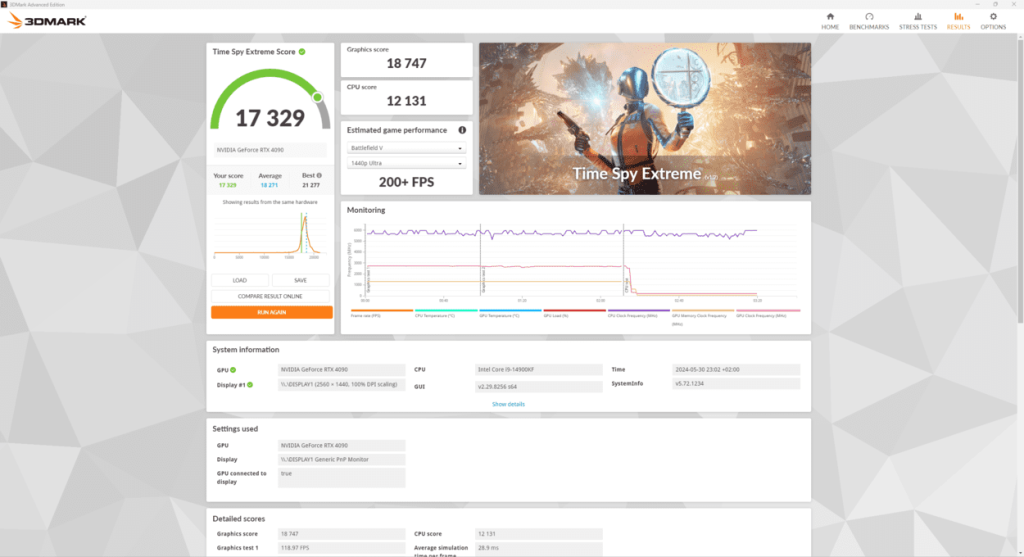
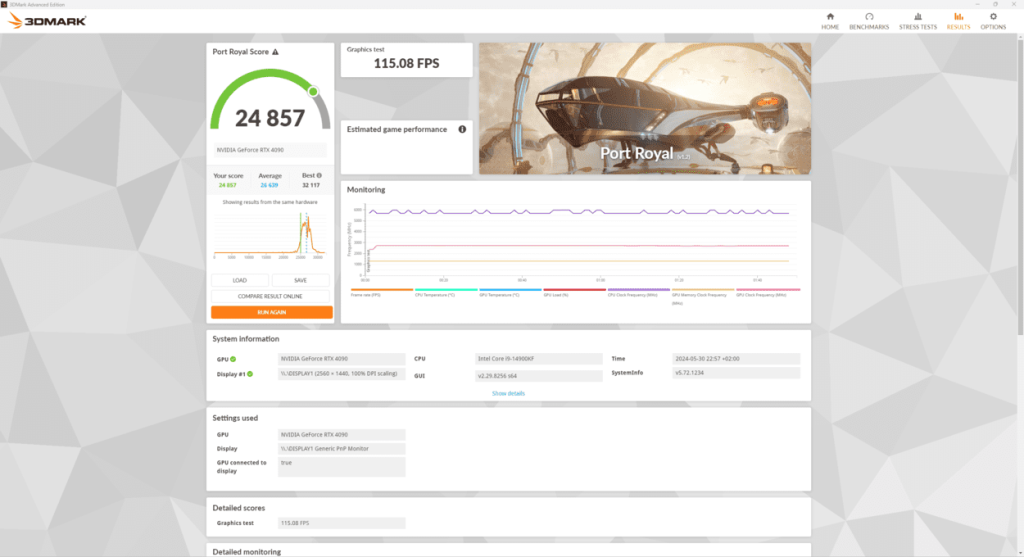
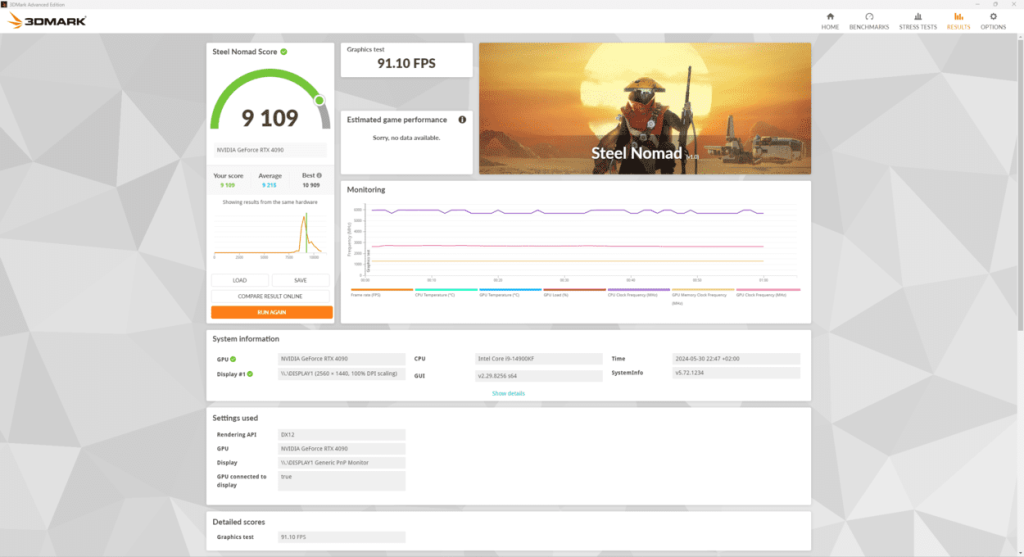
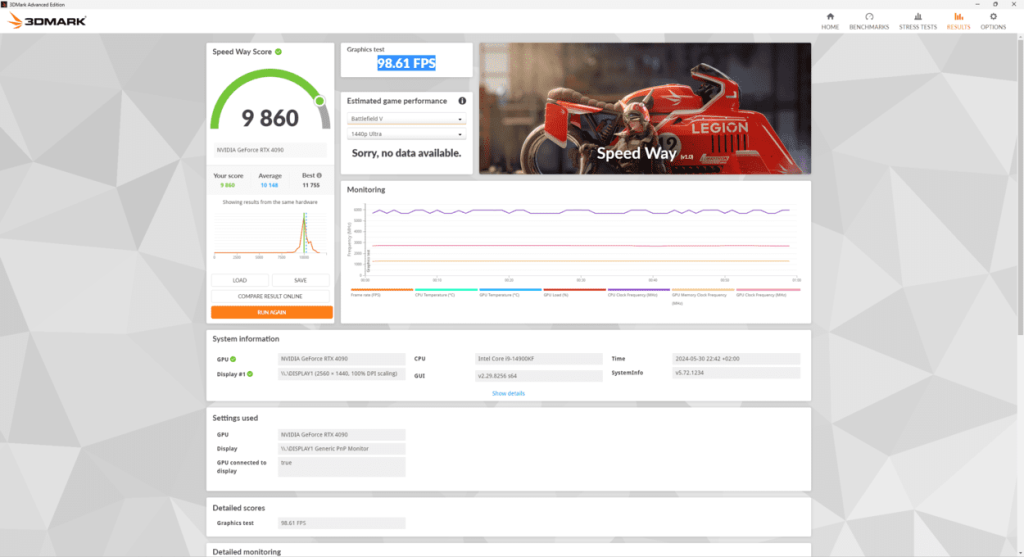
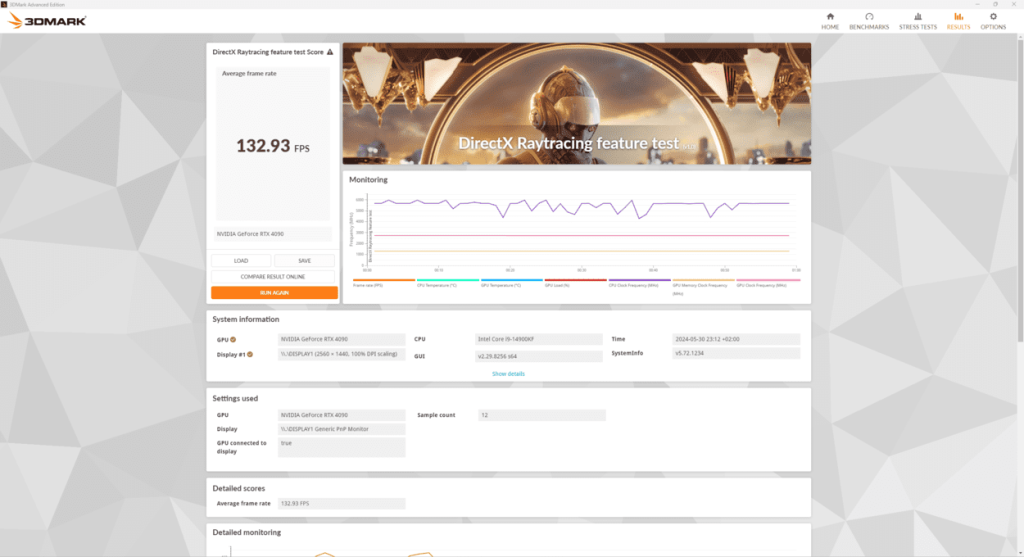
Finally, the graphics part, important here, but there’s little doubt about the graphics performance of this Aurora R16, given the graphics card it’s fitted with, namely a GeForce RTX 4090 from Nvidia.
Noise and cooling
As far as noise levels are concerned, the PC is rather random in this respect. One minute, it’ll be fanning pretty hard, the next, it’ll be relatively quiet. Either way, the performance is there, and it’s not gaming or 1440p benchmarks that will frighten this RTX 4090, as it manages to do so brilliantly and without overheating.
However, there are times when the machine needs to be ventilated to ensure correct start-up, but this is no cause for concern. Of course, at full power, it does make a bit of noise, but that’s no different from any other machine, and I don’t find the Alienware Aurora R16 any noisier than a PC hand-mounted in a classic case. So, if it doesn’t score any particular points, it doesn’t lose any!
Wired and wireless connectivity
In terms of connectivity, you’ll find all the motherboard connectors on the back. These include the following ports
- 1 optical output
- 6 3.5 mm jack connectors
- 4 USB 2.0 PORTS
- 2 USB 3.1
- 1 USB-C 3.2
- 1 USB-C 3.2 Gen 2×2
- 1 RJ45 port
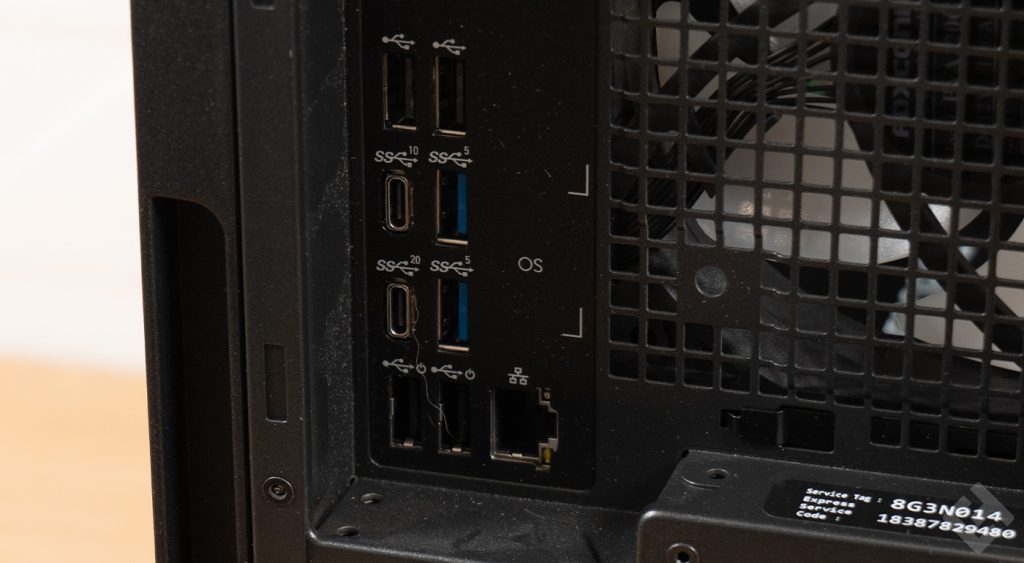
Alongside this, a little further down, we find the beast’s two Wi-Fi 6 antennas, enabling faster Internet reception when the supplied block is plugged in, which moreover goes totally against the grain of what we have from other manufacturers, such as Asus, MSI, Gigabyte, with a relatively simple antenna.

Below this is the graphics card, with an HDMI connector and three DisplayPort connectors, enabling up to 4 displays to be connected. While this doesn’t scare off an RTX 4090, it does beg the question as to the usefulness of 4 displays, as only three will do for this Aurora R16.

As for the rest of the connectivity, there are USB connectors on the front, as well as a jack port, and Bluetooth, without any further information on the version offered here.
Alienware Command Center
Alienware Command Center lets you monitor computer performance and control certain machine parameters. On the Alienware Aurora R16, it’s very practical and easy to use.
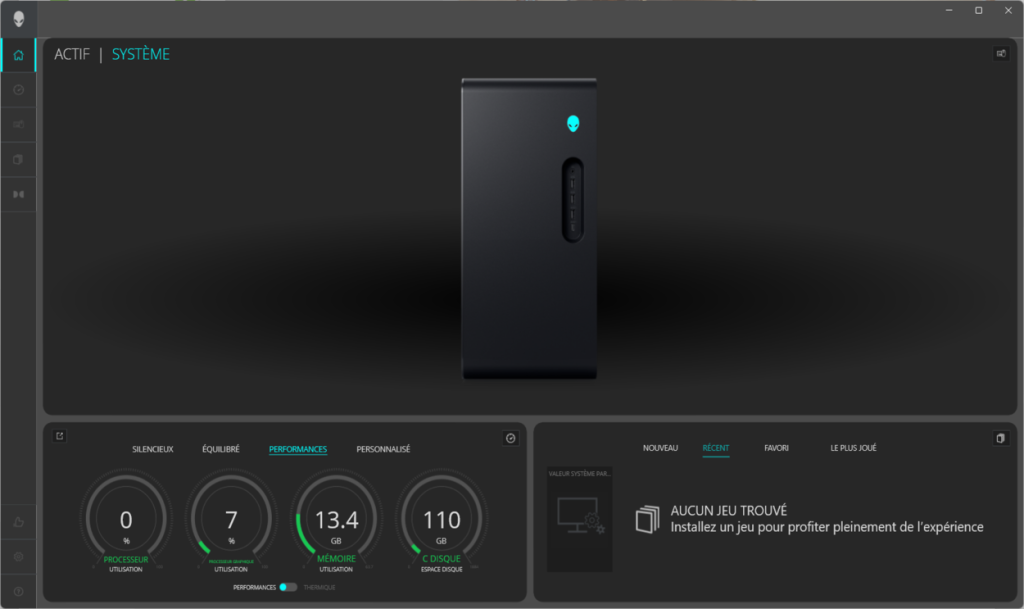
On the first panel, you can select a power mode for the PC. I chose the “Performance” mode, as the PC must deliver all its power. This is a fixed machine, so we don’t care about autonomy, which has no place here, so we can unleash the full power of the beast.
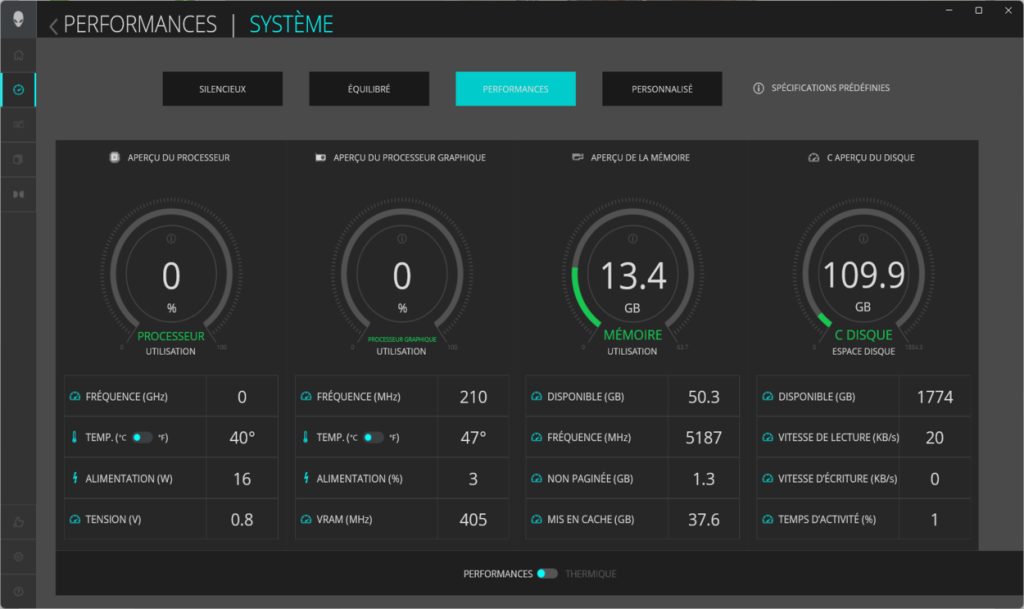
Here, we have more details on the chosen “Performance” mode, with CPU usage, temperature, power consumption and voltage. The same goes for the graphics card, RAM and SSD usage.
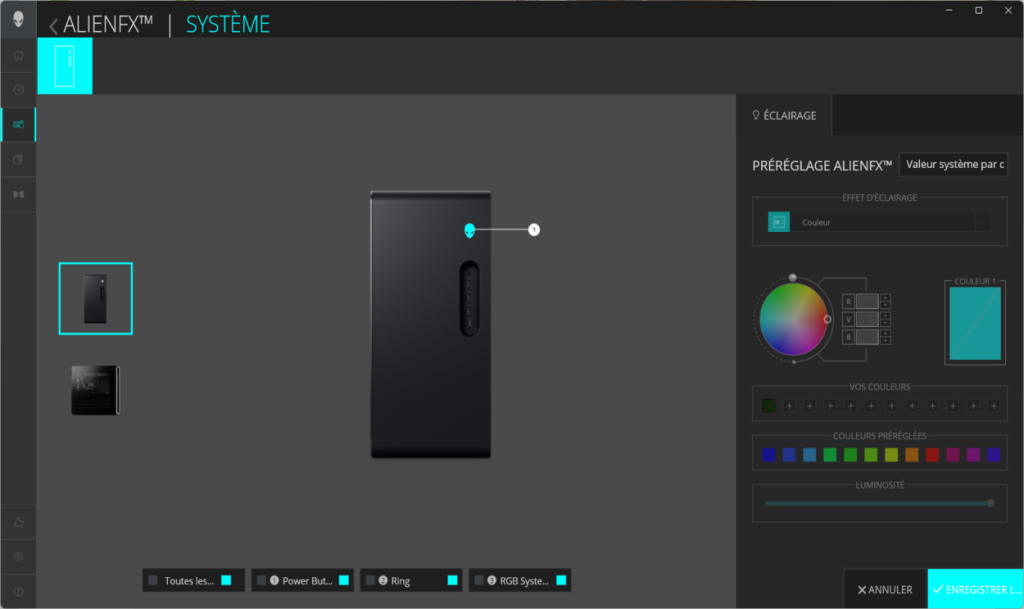
Finally, the last section lets you adjust lighting parameters. For my part, I’ve left the lighting in blue, as I think it suits it well: this blue is really pretty and it gives a modern look to a black box, which doesn’t hurt!
Alienware Aurora R16 : Reviews
Offering great performance, the Alienware Aurora R16 is unquestionably a good gamer PC. However, the computer’s look, sober as it is, leaves room for a few elements that I don’t like. The green PCB on the motherboard, the lack of heatsinks on the SSDs, the graphics card cables that are more visible than the card itself… Nevertheless, for anyone looking for a high-performance gamer PC, this model seems to be a good compromise, thanks to its compact size, which I particularly appreciate.


